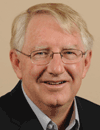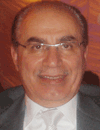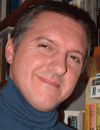
Thursday, 2 February 201208:00 | Registration | |
Session: Cell Line Development |
| | 09:00 |  | Keynote Presentation High Performance Fed-Batch Cell Culture for Both Stable and Transient Production
Matthew Croughan, Professor and Director of the Amgen Bioprocessing Center at KGI, Kecks Graduate Institute, United States of America
New methods to control cell metabolism, along with advanced approaches to mass transfer, can be used to achieve cell densities above 35 million/ml and titers above 10 g/L (stable) or 0.1 g/L (transient), and will drive further improvements going forward. |
| 09:30 | Novel Clinical Grade Approaches for Mesenchymal Stem Cells Ex-vivo Cultures
Olivia Candini, Post-doc Fellow, University Hospital of Modena and Reggio Emilia, Italy
In this paper, innovative approaches to expand adult mesenchymal progenitor cells will be presented coupling improved reagents selection with clinical needs positively impacting both cell performance and regenerative potential. | 10:00 | Recombinant Antibody Mixtures: Control of Antibody Quality during Process Optimization
Christian Müller, Senior Scientist, Synphogen, Denmark
Recent advances of Symphogen’s Sympress™ expression platform will be presented. Sympress™ is a single batch manufacturing approach for production of antibody mixtures with which it is possible to produce a desired antibody composition at high batch-to-batch consistency and with gram-scale titers. The technology significantly reduces the developmental costs for antibody mixtures. | 10:30 | Coffee Break and Networking in Exhibition Hall | 11:15 |  | Keynote Presentation Cellular and Molecular Markers of Productivity in CHO Cell Culture
Mohamed Al-Rubeai, Director, University College Dublin, Ireland
A range of cellular, metabolic and molecular factors have been identified that may act synergically to influence productivity in CHO cell lines. The results of work that employed metabolomics and cytomics will be presented to provide an overview of the complexity of the cellular process of antibody production. |
| 11:45 | Improvement of Cell Culture Technology for Primary Cells and Stem Cell Manipulation
Veit Bergendahl, Head, Miltenyi Biotec GmbH, Germany
Development of complete solutions for translational research comprising of protocols, reagents, media, consumables and instruments at Miltenyi Biotec. We describe how the screening as well as cell production process is supported via integrated cell separation and analysis systems into commercial liquid handler platforms. | 12:15 | Lunch and Networking in Exhibition Hall | 13:30 | Poster Session | 14:15 | Delivering Vaccines to Next Generation Cell Therapies Using Design (DoE), Quality by Design (QbD) and Scale-up/Scale-Down Tools
Tiffany Rau, Global Technical and Technology Manager, Pall Life Sciences, United States of America
Small Scale technologies allow one to efficiently explore multivariate design spaces
through the use of DoE which embodies the principles of Quality by Design. Data will be
presented showing the advantages of using Microbioreactors to develop cell lines and
processes. | |
Session: 3D Cell Culture |
| | 14:45 | 3D Cell Spheroid Formation and Culture Using a 384 Hanging Drop Array Plate
Shuichi Takayama, Associate Professor, University Of Michigan, United States of America
This presentation will describe a 384 hanging drop array plate that makes spheroid formation, culture, and subsequent drug testing on the obtained 3-D cellular constructs as straightforward as conventional 2-D cultures and compatible with standard high throughput liquid handling robots. | 15:15 | Coffee Break and Networking in Exhibition Hall | 16:00 | Cells in Gels in Paper: High-Throughput Platform for Investigation of Cell Function in 3D Tissues
Ratmir Derda, Assistant Professor, University of Alberta, Canada
Simple folding of paper permeated with extracellular matrix (ECM) and cells creates complex 3D tissues. These tissues can be used in chemo-sensitivity testing, investigation of invasion or differentiation. Unfolding rapidly sections multilayer cultures into live tissue sections. It provides the simplest and fastest analysis of 3D cultures to date. | 16:30 | Tumor-endothelial Cell 3D Spheroids: A Paradigm Shifting Model System to Discover New Treatments for Cancer
Meenakshi Upreti, Assistant Professor, University of Arkansas for Medical Sciences, United States of America
A method of gravity-enforced assembly of monodispersed, colour-coded cell types in a “Hanging drop” has been developed to create multi-cell constructs that (i) replicate micro-metastatic growth by mimicking the tumor/tumor microenvironment, (ii) can be precisely size controlled, and (iii) may be implanted in animals to follow the infiltration of the various cell types and study neovascularization, metastasis, disease progression and response to treatment. | |
Session: Preventing Cell Line Cross Contamination |
| | 17:00 | Non-Invasive Classification of Stem Cell Phenotype using Image Texture Analysis
Paul Sammak, Associate Professor, University of Pittsburgh, United States of America
We apply non-invasive live cell phase contrast assays to evaluate stem cell differentiation and validated phenotype by high content analysis. | 17:30 | Drinks Reception |
Friday, 3 February 2012 |
Session: Preventing Cell Line Cross Contamination cont'd |
| | 09:00 | Misidentification of Human Cell Lines: Science vs. Policy
Yvonne Reid, Manager/Scientist, American Type Culture Collection, United States of America
One of the most compelling issues facing the scientific community is the use of misidentified cell line in basic and applied research. This problem which has been known for over 50 years is still ignored by most scientists. The impact of misidentified cell lines in scientific research and the responsibility of each scientist to resolve this problem will be discussed. | 09:30 | Identification of Mouse Cell Lines Using a Multiplex Assay Targeting Short Tandem Repeats
Jamie Almeida, Microbiologist, National Institute of Standards and Technology, United States of America
Currently there are no known methods to identify non-human cell lines using short tandem repeat (STR) markers. A multiplex assay based on STR markers found in the mouse genome was developed to identify mouse cell lines. | |
Session: Future Prospects for Cell Culture Systems |
| | 10:00 |  | Keynote Presentation New Insights in Cell Cultures Continuous Monitoring by Nano-Bio-Technology for Sensing and Imaging
Sandro Carrara, Senior Research Scientist, Swiss Federal Institute of Technology, Switzerland
In this keynote talk, the monitoring of cell cultures of neurons precursors and CaCo2 cells is used to show the potentiality of the Nano-Bio Sensing and Imaging for continuous monitoring of metabolism in cell cultures. |
| 10:30 | Coffee Break and Networking in Exhibition Hall | 11:15 | Challenges for Stem Cell Bioprocessing - Scale-Up or Scale-Out?
Christopher Hewitt, Professor, Loughborough University, United Kingdom
The scale-up techniques to be developed for human cells are analogous to those already developed for biopharmaceutical production using mammalian cells at large scales. However, there are a number of unique challenges that need to be addressed, because the quality of the cell is paramount, rather than the proteins that they express. | 11:45 | The Effect of Nanostructures on Cellular Processes during Differentiation of Neuronal Stem Cells
Clemens Holzer, Head, University of Leoben , Austria
The success of stem cell based tissue engineering and therapeutic approaches is dependent on the standardized up-scaling, maintenance and possibly differentiation of high grade stem cells in vitro. We have identified a range of polymers that optimize stem cell viability and proliferation in vitro and can thereby be further utilised as substrates for expansion and tissue engineering approaches.
| 12:15 | Lunch and Networking in the Exhibition Hall | 13:30 | Poster Session | |
Session: Application & Manipulation of Cultured Cells |
| | 14:15 | Novel Angiogenic Model Based on Stable, Fluorescently Labeled Cell Lines Amenable to High Content Screening
Natalie Prigozhina, Staff Scientist, Sanford-Burnham Medical Research Institute, United States of America
We present a novel angiogenic model based on stable, fluorescently labeled endothelial cell lines amenable to scale-up for high content screening. | 14:45 | A Dynamic Cell Culture Model for Lung Cancer Drug Discovery
Sanjit Nirmalanandhan, Research Assistant Professor, University of Kansas Medical Center, United States of America
A dynamic cell culture model and the effects of simulated mechanical forces on the ability of a series of chemotherapeutic agents to induce cytotoxicity in two cancer cell lines will be discussed. | 15:15 | Coffee Break and Networking in Exhibition hall | 15:45 | Close of Conference |
|

 Add to Calendar ▼2012-02-02 00:00:002012-02-03 00:00:00Europe/LondonCell CultureCell Culture in San Diego, USASan Diego, USASELECTBIOenquiries@selectbiosciences.com
Add to Calendar ▼2012-02-02 00:00:002012-02-03 00:00:00Europe/LondonCell CultureCell Culture in San Diego, USASan Diego, USASELECTBIOenquiries@selectbiosciences.com